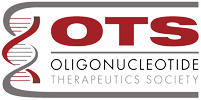Targeting ALS-FUS: Early Insights from the Jacifusen (ION363) Case Series
Amyotrophic lateral sclerosis (ALS) remains one of the most devastating diseases and is the most common motor disease among adults, affecting around 55,000 people in the US, Europe, and Japan. More than 40 genes have been linked to ALS, providing a valuable opportunity for targeted treatment. Among these, mutations in the FUS gene cause a particularly aggressive form of ...
Behind the Rapid Development of an Individualized CRISPR Therapy for a Deadly Rare Disease
A baby is the first person to receive a bespoke CRISPR therapy designed specifically for him that directly fixes a disease-causing mutation in his genome. It wasn't long after KJ was born in the summer of 2024 that doctors noticed something was wrong. Within 48 hours, he was lethargic and struggled to breathe, prompting doctors to run a blood ...
The Oligonucleotide Therapeutics Society Announces the 21st Annual Meeting in Budapest, Hungary
The Oligonucleotide Therapeutics Society (OTS) is pleased to announce the 21st Annual OTS Meeting, scheduled for October 19–22, 2025, at the Budapest Congress Center in Budapest, Hungary. This premier global gathering of the oligonucleotide community is renowned for fostering dynamic, cross-disciplinary dialogue—bringing together leaders in chemistry, delivery, biology, immunology, and clinical medicine to advance the field of oligonucleotide therapeutics. ...
Genome Sequencing and Gene Editing: Ancient DNA in a Living Species
Known for their large size — sometimes growing up to six feet in length — dark fur and bone-cracking back teeth, dire wolves used to be the most prominent species in continental North America (1). The canines became extinct roughly 10,000 years ago, gradually dying out as their prey did. However, recent news claims that through gene sequencing and ...
OTS Member Highlight – Masad Damha, PhD
For Masad Damha, falling in love with science was easy. Growing up in Managua, Nicaragua, his high school teachers encouraged scientific exploration, curiosity, and experimentation, such as processing vegetable oil into soap, producing hydrogen and oxygen from water via electrolysis, and determining the gravitational force constant using a pendulum. The students also visited industries that use geothermal energy for ...
Targeting DNA Mismatch Repair as a Potential Therapeutic Strategy for Huntington’s Disease
Huntington's disease (HD) is a devastating and fatal neurodegenerative disorder affecting movement, thinking, and behavior. In the United States alone, there are approximately 40,000 people with symptomatic Huntington's disease, and more than 200,000 are at risk of inheriting it. The fatal disease often leaves a devastating family legacy, as a child of someone with the HD mutation has a ...
Targeting ALS-FUS: Early Insights from the Jacifusen (ION363) Case Series
Amyotrophic lateral sclerosis (ALS) remains one of the most devastating diseases and is the most ...
Behind the Rapid Development of an Individualized CRISPR Therapy for a Deadly Rare Disease
A baby is the first person to receive a bespoke CRISPR therapy designed specifically for ...
The Oligonucleotide Therapeutics Society Announces the 21st Annual Meeting in Budapest, Hungary
The Oligonucleotide Therapeutics Society (OTS) is pleased to announce the 21st Annual OTS Meeting, scheduled ...
Genome Sequencing and Gene Editing: Ancient DNA in a Living Species
Known for their large size — sometimes growing up to six feet in length — ...
OTS Member Highlight – Masad Damha, PhD
For Masad Damha, falling in love with science was easy. Growing up in Managua, Nicaragua, ...
Targeting DNA Mismatch Repair as a Potential Therapeutic Strategy for Huntington’s Disease
Huntington's disease (HD) is a devastating and fatal neurodegenerative disorder affecting movement, thinking, and behavior. ...














